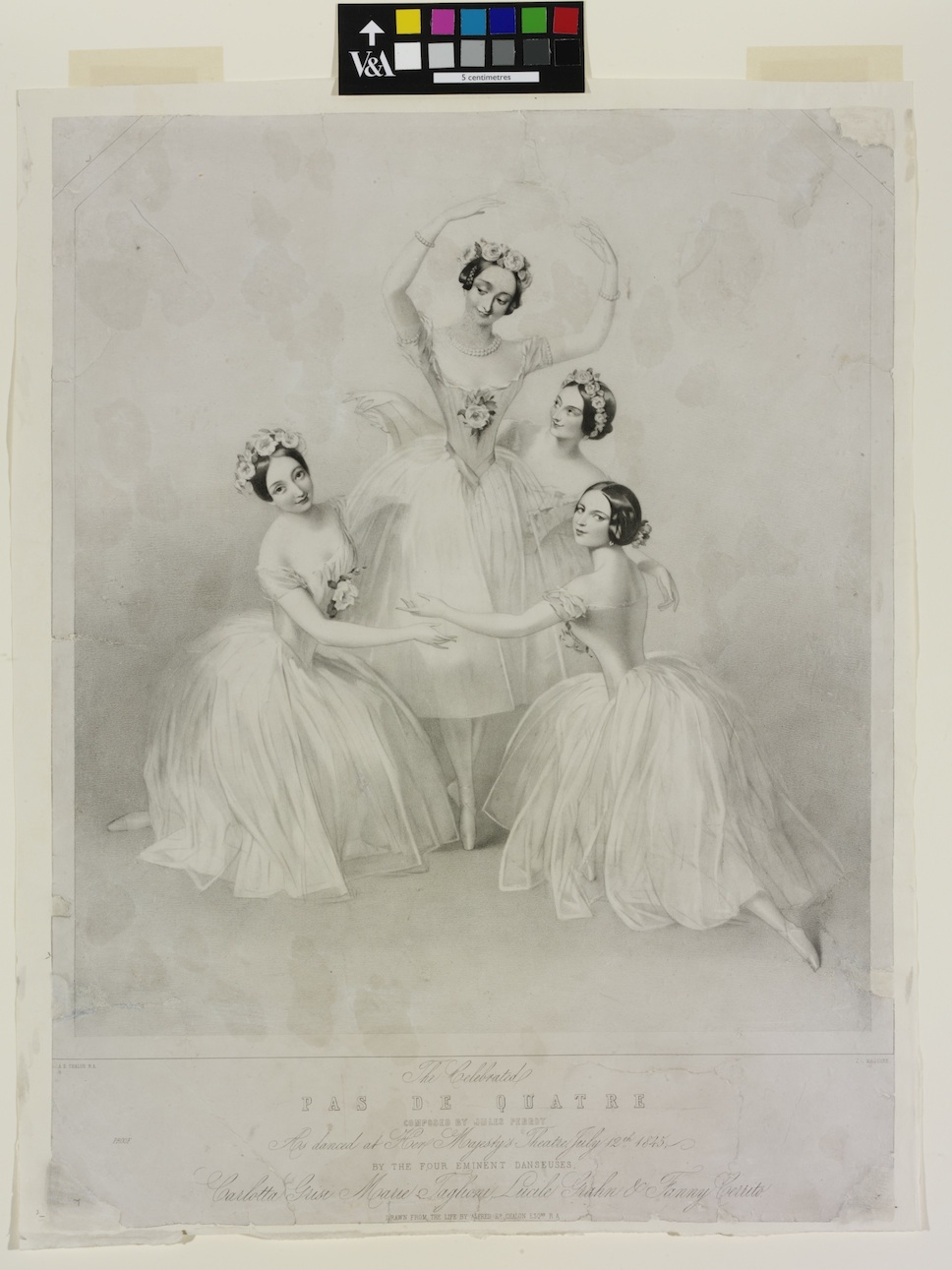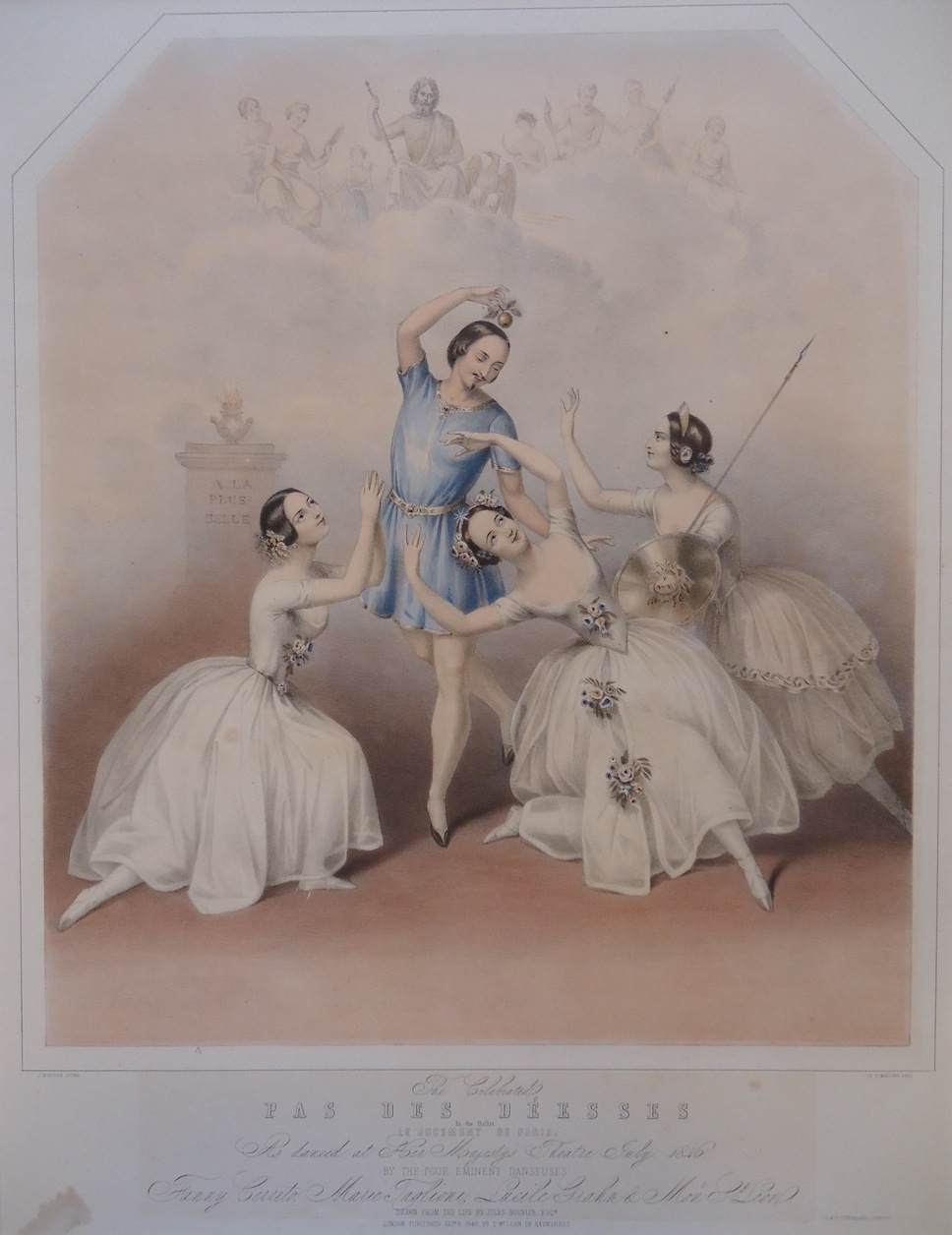fig. 6 Alfred Edward Chalon RA (artist) and T. H. Maguire (lithographer), The Celebrated PAS DE QUATRE COMPOSED BY JULES PERROT As danced at Her Majesty's Theatre July 12th 1845, BY THE FOUR EMINENT DANSEUSES, Carlotta Grisi, Marie Taglioni, Lucile Grahn & Fanny Cerrito (1845), published in London, hand colored lithograph, Victoria and Albert Museum, London
fig. 8 Jules Bouvier, The Celebrated Pas des déesses in the ballet Le Jugement de Paris. As danced at Her Majesty's Theatre July, 1846 by the four eminent danseuses Fanny Cerrito, Marie Taglioni, Lucile Grahn & Mon. St Leon. (1846), published in London, hand colored lithograph, 58.7 x 47.2 cm, Victoria and Albert Museum, London
This (fig. 8) is a print of the Pas de Déesses produced a year later in 1846 by Benjamin Lumley and Jules Perrot. A similar quartet composition is used by Jules Bouvier who clearly had knowledge of Chalon’s earlier print. In Taglioni’s place of apotheosis stands Arthur St. Leon suspending a golden ball above the three competing dancers Fanny Cerrito, Lucile Grahn and Marie Taglioni. The apple of gold will be awarded, the podium tells us, ‘a la plus belle’, thus gratifying the connoisseurial prurience of the male observer on paper. I suggest that the spirit of Benjamin Lumley has transmigrated into the figure of Arthur St. Leon who himself now occupies the central, elevated position previously held by Taglioni. The danseuses exhibit and promote their differing styles of grace and comportment to the judicious male, envoy of the patriarchy which appears in ‘the gods’, a sublimation of the audience, in a satisfyingly Christianizing hierarchy of apotheosis or assumption which confirms and idealizes the structure of display, competition and cash reward suggested in this composition of pliant dancers.
What more powerful, erotic, quasi-spiritual image could there be in a heavily industrialized, labouring nation in the ‘hungry forties’ than that of four beautiful white women executing a highly stylized form of inessential movement? Whose kinetic ease seemed to lubricate a social ideal of the miraculously produced fruits of labour without having to perceive any trace of that labour at all as if it had come already completed out of the pure generosity of spirit, ease and bounty of the world to render itself up explicitly for the exquisite pleasure of Benjamin Lumley and writers of the New Sporting Magazine to endow it with a golden apple?


